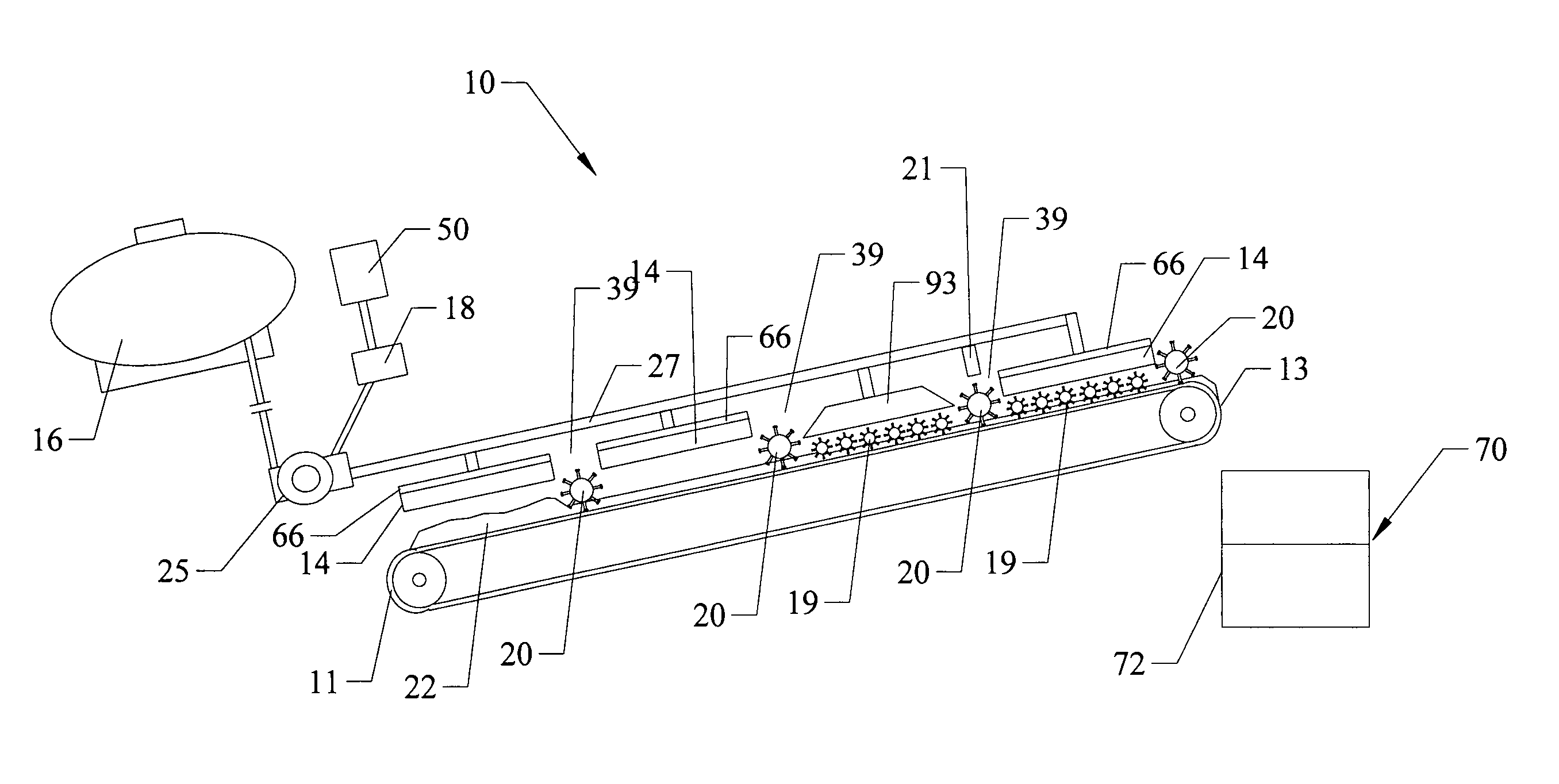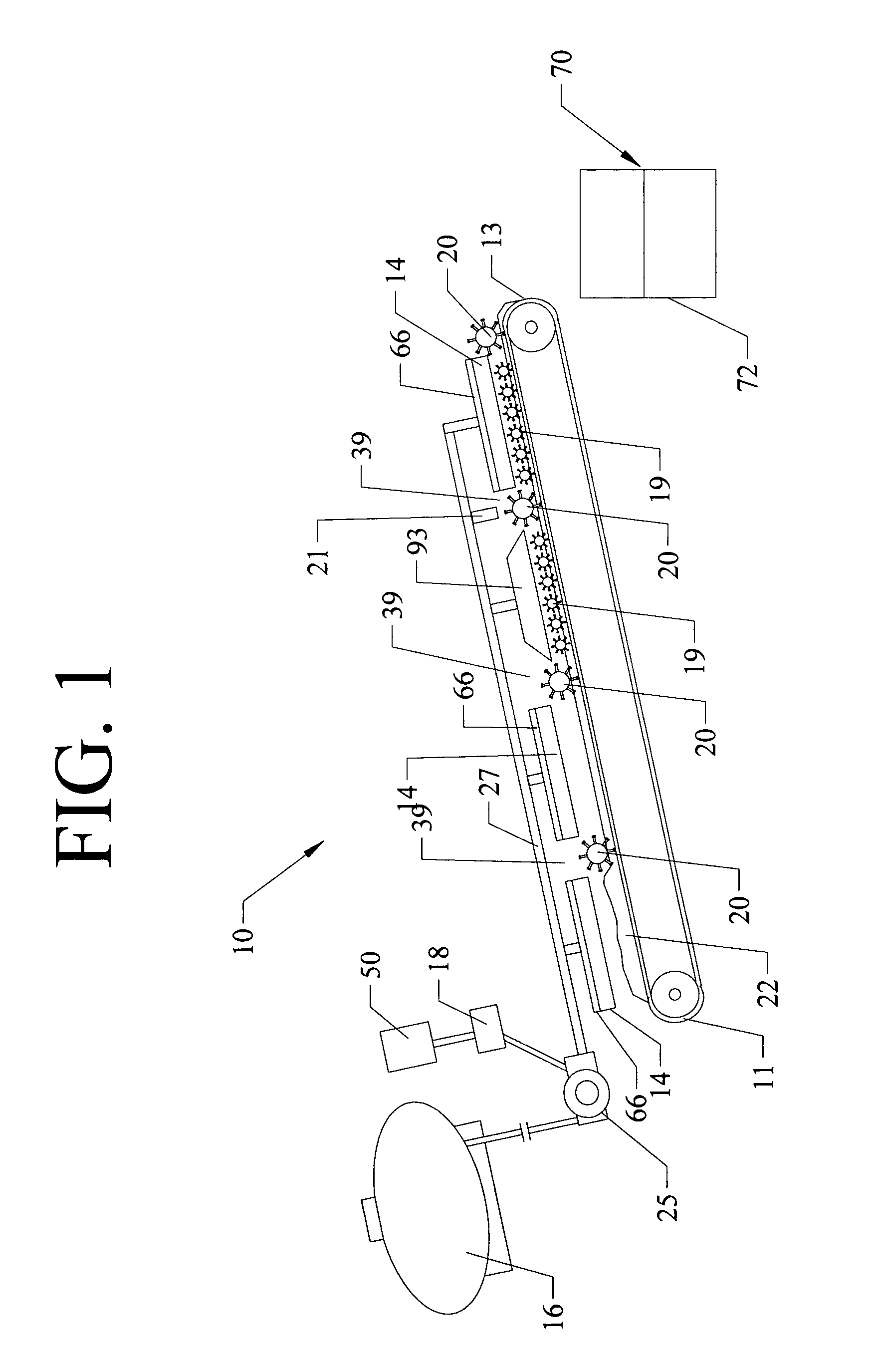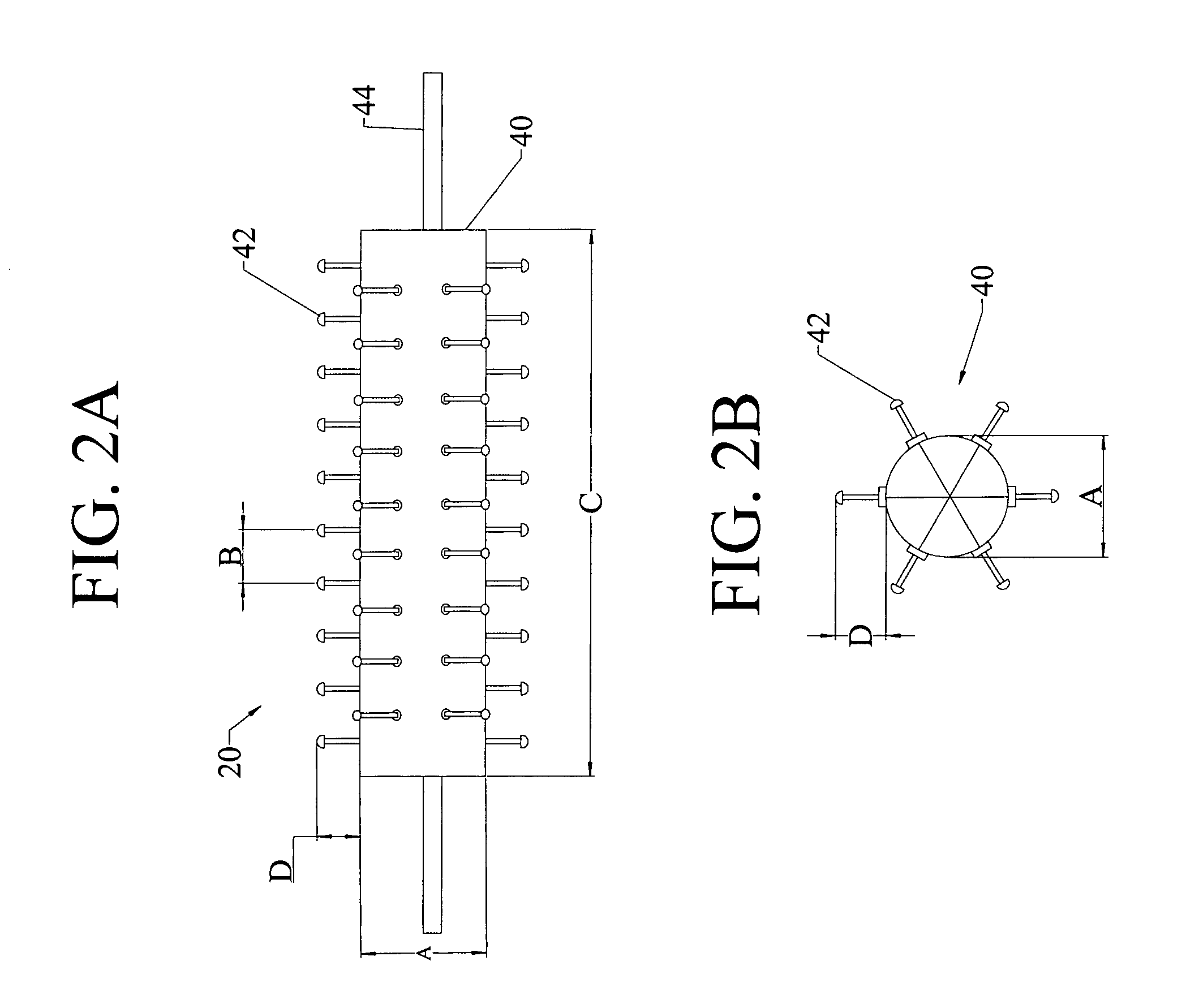System for producing asphalt from reclaimed asphalt pavement
a technology of reclaimed asphalt and preheating system, which is applied in the field of asphalt manufacturing, can solve the problems of difficult to raise the percentage above 15%-25%, significant amount of expensive fuel being used, and present challenges in using rap, so as to achieve optimal moisture release, reduce the possibility of igniting the asphalt inherent in rap, and save the effect of us
- Summary
- Abstract
- Description
- Claims
- Application Information
AI Technical Summary
Benefits of technology
Problems solved by technology
Method used
Image
Examples
Embodiment Construction
[0046]Referring to FIG. 1, a side view schematic of a preferred embodiment of the system 10 of the present invention is shown.
[0047]The system 10 includes a conveyor belt 12 in communication with a source (not shown) of the RAP 22. The conveyor belt 12 has a first end 11, where RAP 22 is first deposited onto the conveyor belt 12, and a terminal end 13, where the dried and heated RAP 22 leaves the conveyor belt 12 and is deposited into asphalt producing module 70. The conveyer belt 12 preferably takes the form of conveyor belts currently used to transport aggregate material in conventional HMA and WMA manufacturing processes. The belt may be manufactured of a non-combustible material, such as steel, but is preferably a composition belt manufactured of a rubberized material. Such a material is preferred due its gripping properties and price. The conveyor belt 12 is adapted to convey the RAP 22 at a predetermined rate from the source to the asphalt production module 70. The conveyor be...
PUM
| Property | Measurement | Unit |
|---|---|---|
| length | aaaaa | aaaaa |
| diameter | aaaaa | aaaaa |
| diameter | aaaaa | aaaaa |
Abstract
Description
Claims
Application Information
 Login to View More
Login to View More - R&D
- Intellectual Property
- Life Sciences
- Materials
- Tech Scout
- Unparalleled Data Quality
- Higher Quality Content
- 60% Fewer Hallucinations
Browse by: Latest US Patents, China's latest patents, Technical Efficacy Thesaurus, Application Domain, Technology Topic, Popular Technical Reports.
© 2025 PatSnap. All rights reserved.Legal|Privacy policy|Modern Slavery Act Transparency Statement|Sitemap|About US| Contact US: help@patsnap.com



